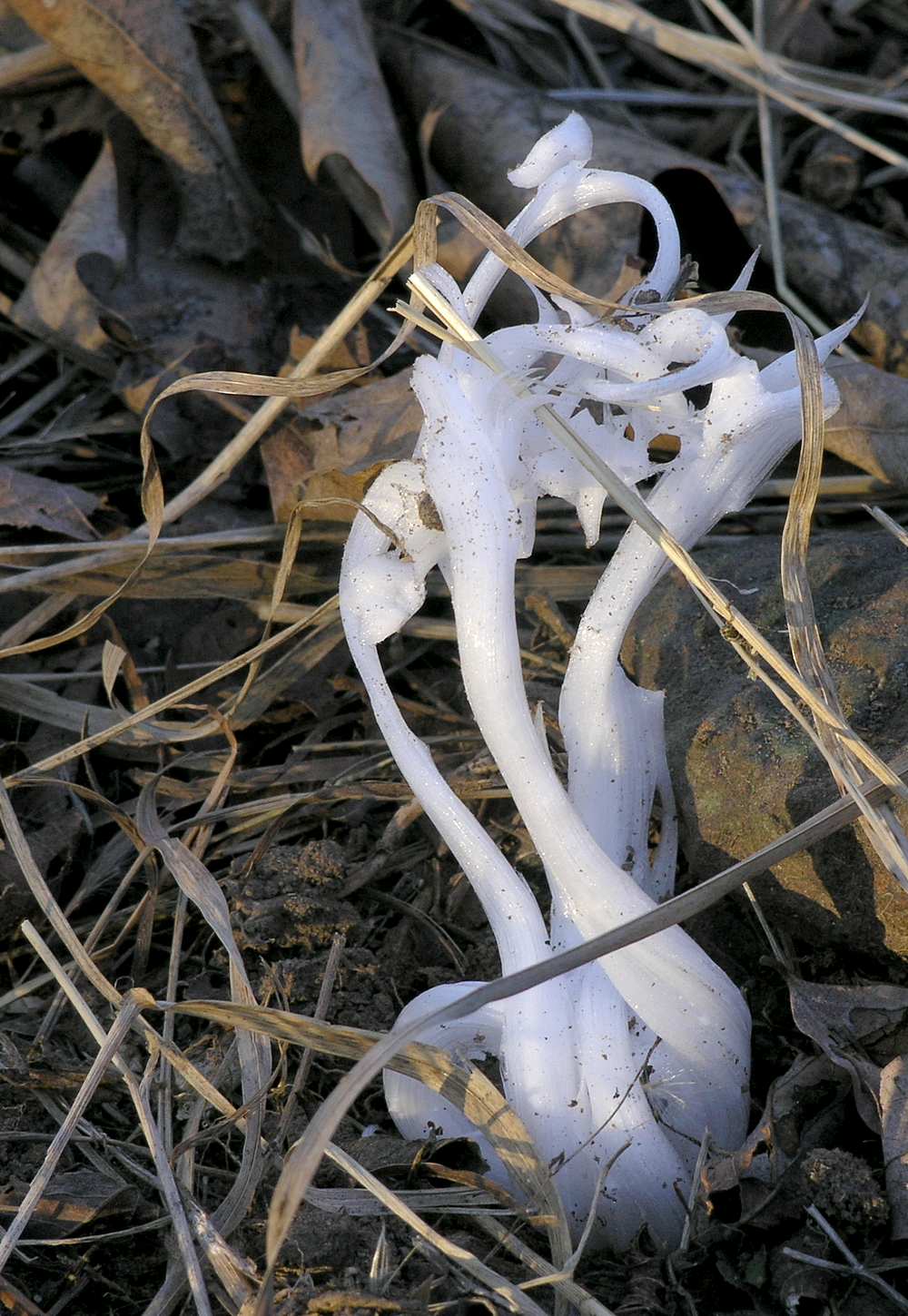|
Hair Ice
Hair ice, also known as ice wool or frost beard, is a type of ice that forms on dead wood and takes the shape of fine, silky hair. It is somewhat uncommon, and has been reported mostly at latitudes between 45 and 55 °N in broadleaf forests. The meteorologist (and discoverer of continental drift) Alfred Wegener described hair ice on wet dead wood in 1918,Alfred Wegener: ''Haareis auf morschem Holz.'' Die Naturwissenschaften 6/1, 1918. S. 598–601. assuming some specific fungi as the catalyst, a theory mostly confirmed by Gerhart Wagner and Christian Mätzler in 2005.Gerhart Wagner: Haareis – eine seltene winterliche Naturerscheinung. Was haben Pilze damit zu tun?' SZP/BSM 2005.Gerhart Wagner, Christian Mätzler: Haareis auf morschem Laubholz als biophysikalisches Phänomen.'' Forschungsbericht Nr. 2008-05-MW. Universität Bern. 2008.PDF-Download)Gerhart Wagner, Christian Mätzler: ''Haareis - Ein seltenes biophysikalisches Phänomen im Winter.'' Naturwissenschaftliche Rund ... [...More Info...] [...Related Items...] OR: [Wikipedia] [Google] [Baidu] |
Ice Crystal
Ice crystals are solid ice exhibiting atomic ordering on various length scales and include hexagonal columns, hexagonal plates, dendritic crystals, and diamond dust. Formation The hugely symmetric shapes are due to depositional growth, namely, direct deposition of water vapor onto the ice crystal. Depending on environmental temperature and humidity, ice crystals can develop from the initial hexagonal prism into numerous symmetric shapes. Possible shapes for ice crystals are columns, needles, plates and dendrites. If the crystal migrates into regions with different environmental conditions, the growth pattern may change, and the final crystal may show mixed patterns. Ice crystals tend to fall with their major axis aligned along the horizontal, and are thus visible in polarimetric weather radar signatures with enhanced (positive) differential reflectivity values. Electrification of ice crystals can induce alignments different from the horizontal. Electrified ice crystals are ... [...More Info...] [...Related Items...] OR: [Wikipedia] [Google] [Baidu] |
Hydrology
Hydrology () is the scientific study of the movement, distribution, and management of water on Earth and other planets, including the water cycle, water resources, and environmental watershed sustainability. A practitioner of hydrology is called a hydrologist. Hydrologists are scientists studying earth or environmental science, civil or environmental engineering, and physical geography. Using various analytical methods and scientific techniques, they collect and analyze data to help solve water related problems such as environmental preservation, natural disasters, and water management. Hydrology subdivides into surface water hydrology, groundwater hydrology (hydrogeology), and marine hydrology. Domains of hydrology include hydrometeorology, surface hydrology, hydrogeology, drainage-basin management, and water quality, where water plays the central role. Oceanography and meteorology are not included because water is only one of many important aspects within those fields. H ... [...More Info...] [...Related Items...] OR: [Wikipedia] [Google] [Baidu] |
Frost And Rime
Frost is a thin layer of ice on a solid surface, which forms from water vapor in an above-freezing atmosphere coming in contact with a solid surface whose temperature is below freezing, and resulting in a phase change from water vapor (a gas) to ice (a solid) as the water vapor reaches the freezing point. In temperate climates, it most commonly appears on surfaces near the ground as fragile white crystals; in cold climates, it occurs in a greater variety of forms. The propagation of crystal formation occurs by the process of nucleation. The ice crystals of frost form as the result of fractal process development. The depth of frost crystals varies depending on the amount of time they have been accumulating, and the concentration of the water vapor (humidity). Frost crystals may be invisible (black), clear (translucent), or white; if a mass of frost crystals scatters light in all directions, the coating of frost appears white. Types of frost include crystalline frost (hoar f ... [...More Info...] [...Related Items...] OR: [Wikipedia] [Google] [Baidu] |
Needle Ice
Needle ice is a needle-shaped column of ice formed by groundwater. Needle ice forms when the temperature of the soil is above and the surface temperature of the air is below . Liquid water underground rises to the surface by capillary action, and then freezes and contributes to a growing needle-like ice column. Needle ice requires a flowing form of water underneath the surface, from that point it comes into contact with air that is below freezing. This area of the process usually occurs at night when temperature reaches its low point. From then on, it produces the needle like structure known as "Needle Ice". The ice needles are typically a few centimetres long. While growing, they may lift or push away small soil particles. On sloped surfaces, needle ice may be a factor contributing to soil creep.Isbell, D.: Needle Ice on Mt. Osceola'', EPOD of July 10, 2005. URL last accessed 2007-12-07.Pidwirny, M. URL last accessed 2007-12-07. Alternate names for needle ice are "frost pill ... [...More Info...] [...Related Items...] OR: [Wikipedia] [Google] [Baidu] |
Hoarfrost
Frost is a thin layer of ice on a solid surface, which forms from water vapor in an above-freezing atmosphere coming in contact with a solid surface whose temperature is below freezing, and resulting in a phase change from water vapor (a gas) to ice (a solid) as the water vapor reaches the freezing point. In temperate climates, it most commonly appears on surfaces near the ground as fragile white crystals; in cold climates, it occurs in a greater variety of forms. The propagation of crystal formation occurs by the process of nucleation. The ice crystals of frost form as the result of fractal process development. The depth of frost crystals varies depending on the amount of time they have been accumulating, and the concentration of the water vapor (humidity). Frost crystals may be invisible (black), clear (translucent), or white; if a mass of frost crystals scatters light in all directions, the coating of frost appears white. Types of frost include crystalline frost (hoar frost ... [...More Info...] [...Related Items...] OR: [Wikipedia] [Google] [Baidu] |
Frost Flower
A frost flower or ice flower is formed when thin layers of ice are extruded from long-stemmed plants in autumn or early winter. The thin layers of ice are often formed into exquisite patterns that curl into "petals" that resemble flowers. Types Frost flower formations are also referred to as ''frost faces'', ''ice castles'', ''ice blossoms'', or ''crystallofolia''. Types of frost flowers include needle ice, frost pillars or frost columns, extruded from pores in the soil, and ice ribbons, rabbit frost or rabbit ice, extruded from linear fissures in plant stems. The term "ice flower" is also used as synonym for ice ribbons, but it may be used to describe the unrelated phenomenon of window frost as well. Formation The formation of frost flowers is dependent on a freezing weather condition occurring when the ground is not already frozen. The sap in the stem of the plants will expand (water expands when frozen), causing long, thin cracks to form along the length of the stem. W ... [...More Info...] [...Related Items...] OR: [Wikipedia] [Google] [Baidu] |
Antifreeze Protein
Antifreeze proteins (AFPs) or ice structuring proteins refer to a class of polypeptides produced by certain animals, plants, fungi and bacteria that permit their survival in temperatures below the freezing point of water. AFPs bind to small ice crystals to inhibit the growth and recrystallization of ice that would otherwise be fatal. There is also increasing evidence that AFPs interact with mammalian cell membranes to protect them from cold damage. This work suggests the involvement of AFPs in cold acclimatization. Non-colligative properties Unlike the widely used automotive antifreeze, ethylene glycol, AFPs do not lower freezing point in proportion to concentration. Rather, they work in a noncolligative manner. This phenomenon allows them to act as an antifreeze at concentrations 1/300th to 1/500th of those of other dissolved solutes. Their low concentration minimizes their effect on osmotic pressure. The unusual properties of AFPs are attributed to their selective af ... [...More Info...] [...Related Items...] OR: [Wikipedia] [Google] [Baidu] |
Fungicide
Fungicides are biocidal chemical compounds or biological organisms used to kill parasitic fungi or their spores. A fungistatic inhibits their growth. Fungi can cause serious damage in agriculture, resulting in critical losses of yield, quality, and profit. Fungicides are used both in agriculture and to fight fungal infections in animals. Chemicals used to control oomycetes, which are not fungi, are also referred to as fungicides, as oomycetes use the same mechanisms as fungi to infect plants. Fungicides can either be contact, translaminar or systemic. Contact fungicides are not taken up into the plant tissue and protect only the plant where the spray is deposited. Translaminar fungicides redistribute the fungicide from the upper, sprayed leaf surface to the lower, unsprayed surface. Systemic fungicides are taken up and redistributed through the xylem vessels. Few fungicides move to all parts of a plant. Some are locally systemic, and some move upwardly. Most fungicides that can ... [...More Info...] [...Related Items...] OR: [Wikipedia] [Google] [Baidu] |
Recrystallization (chemistry)
In chemistry, recrystallization is a technique used to purify chemicals. By dissolving a mixture of a compound and impurities in an appropriate solvent, either the desired compound or impurities can be removed from the solution, leaving the other behind. It is named for the crystals often formed when the compound precipitates out. Alternatively, ''recrystallization'' can refer to the natural growth of larger ice crystals at the expense of smaller ones. Chemistry In chemistry, recrystallization is a procedure for purifying compounds. The most typical situation is that a desired "compound A" is contaminated by a small amount of "impurity B". There are various methods of purification that may be attempted (see Separation process), recrystallization being one of them. There are also different recrystallization techniques that can be used such as: Single-solvent recrystallization Typically, the mixture of "compound A" and "impurity B" is dissolved in the smallest amount of hot solv ... [...More Info...] [...Related Items...] OR: [Wikipedia] [Google] [Baidu] |
Medullary Ray (botany)
Medullary rays are cellular structures found in some species of wood. They appear as radial planar structures, perpendicular to the growth rings, which are visible to the naked eye. In a transverse section they appear as radiating lines from the centre of the log. In an axial section they may appear as a variety of transverse markings, depending on how close the section is to the plane of the ray. In a tangential section they may be hard to see at all. They are formed by the activity of fascicular cambium. During the process of the division of cambium, the cambium cuts out cells on both the outer and inner side. These cells are parenchymatous. Most of these cells transform into xylem and phloem. But certain cells don't transform into xylem and phloem and remain as such. These cells cut out by the cambium towards the periphery are phloem parenchyma while those towards the pith are xylem parenchyma. Both of these cells together work as secondary medullary rays. These medullary or p ... [...More Info...] [...Related Items...] OR: [Wikipedia] [Google] [Baidu] |





